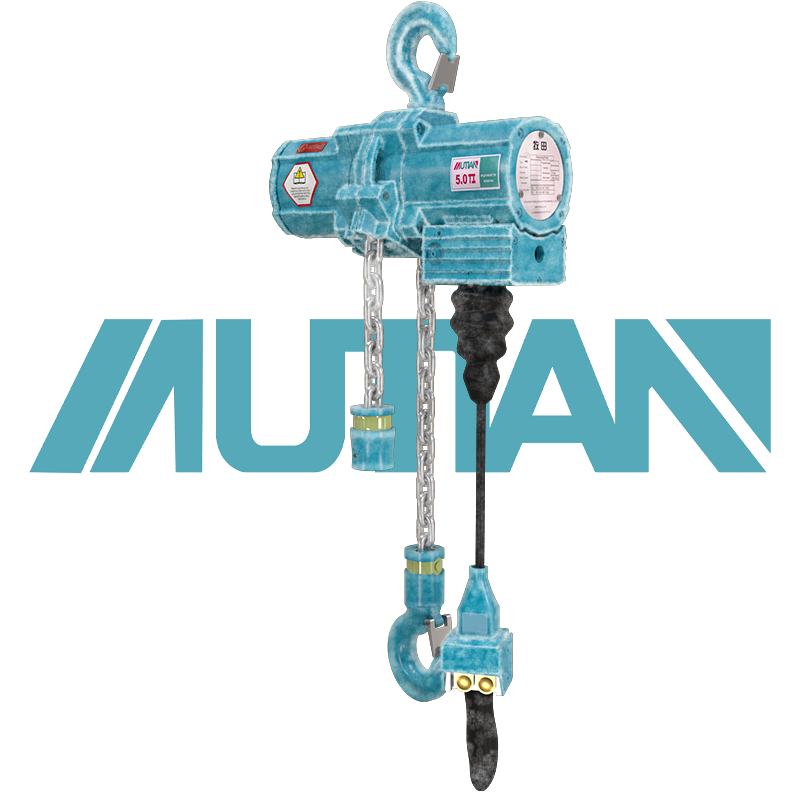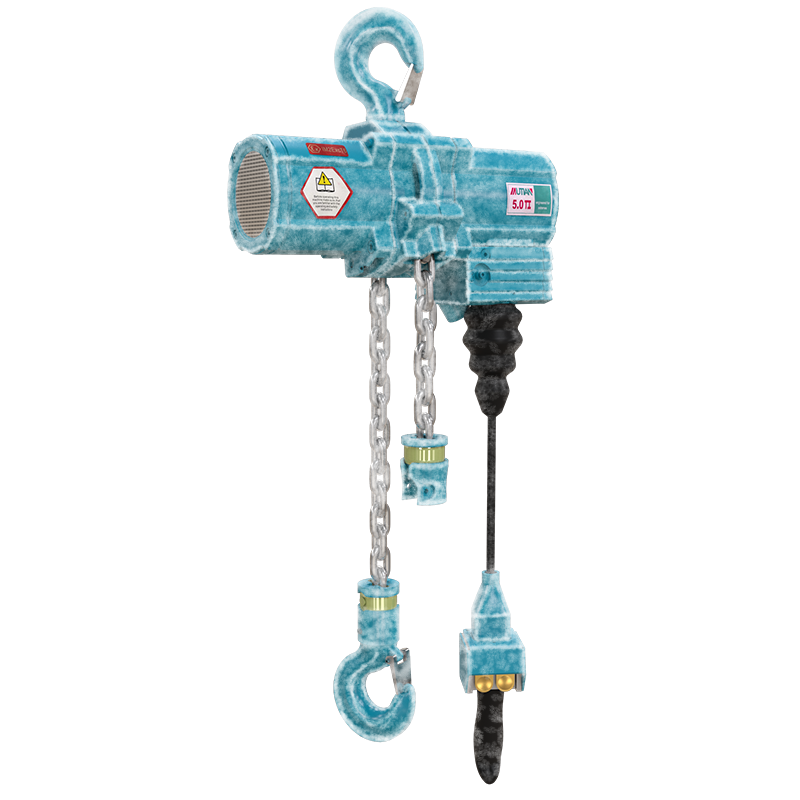 中文版
中文版



Welcome to contact us by phone:0086-0312-7969888
The materials used in low-temperature-resistant pneumatic hoists are carefully selected to ensure the hoist can operate effectively and maintain its mechanical properties in extremely cold conditions. Cold-resistant materials are chosen to withstand low temperatures without becoming brittle, losing flexibility, or experiencing other adverse effects. While specific material choices may vary among manufacturers, common materials used for low-temperature-resistant pneumatic hoists include:
Cold-Resistant Alloys:
Certain alloys, such as those with high nickel content or specialized cold-resistant alloys, are used in critical components to maintain strength and flexibility in low temperatures.
Stainless Steel:
Stainless steel is often employed in the construction of various components, including load chains, hooks, and fasteners. Stainless steel provides corrosion resistance, which is beneficial in cold and potentially wet environments.
Polymer and Rubber Components:
Cold-resistant polymers and rubber materials are used for seals, gaskets, and other components that require flexibility and elasticity in low temperatures. These materials prevent the ingress of moisture and help maintain air-tightness.
Specialized Lubricants:
Lubricants play a crucial role in the operation of pneumatic hoists, and low-temperature-resistant lubricants are used to ensure smooth movement of moving parts in cold conditions.
Freeze-Resistant Air Lines:
Air lines and hoses are designed to resist freezing, preventing the obstruction of airflow. Specialized materials with low-temperature flexibility are used for these components.
High-Impact Plastics:
Certain structural components may be made from high-impact plastics that maintain their mechanical properties in cold temperatures. These plastics contribute to the overall durability and resilience of the hoist.
Cold-Resistant Coatings:
External surfaces may be coated with cold-resistant materials to protect against environmental factors and to ensure the hoist's longevity in low-temperature conditions.
It's important to note that manufacturers may use proprietary materials and engineering techniques to enhance the cold-resistant properties of their pneumatic hoists. Additionally, adherence to industry standards and certifications for low-temperature performance is crucial for ensuring the reliability and safety of the hoist in cold environments. Users should refer to the product documentation provided by the manufacturer for specific details on materials and temperature specifications.


X